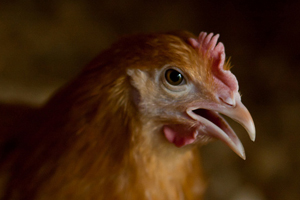Study: Reducing heat stress cell by cell

ABSTRACT: A US/Turkey study into how cell signaling paythways can be altered by certain phytochemicals in food, and thus reduce heat stress in poultry.
By K Sahin, C Orhan, MO Smith and N Sahin
Heat stress compromises performance and productivity through reducing feed intake, while decreasing nutrient utilisation, growth rate, egg production, egg quality and feed efficiency, leading to economic losses in poultry. High temperatures can lead to oxidative stress associated with a reduced antioxidant status in the bird in vivo, as reflected by increased oxidative damage and lowered plasma concentrations of antioxidants.
Several strategies are currently available to alleviate the negative effects of high environmental temperature on the performance of poultry. However, as it is expensive to cool buildings in which animals are housed, many efforts are focused on dietary manipulation. In terms of reducing the negative effects of environmental stress, antioxidants are used in poultry feed because of the reported benefits of these supplements, including their anti-stress effects.
In this review, the mode of action of these supplements is investigated, and evidence is presented showing that phytochemicals can alter several cell signalling pathways. The agents include epigallocatechin-3-gallate (EGCG; green tea), lycopene (tomato) and resveratrol (red grapes, peanuts and berries). The cell-signalling pathways inhibited by EGCG include transcription factors (nuclear factor kappa-light-chain-enhancer of activated B cells (NF-κB)) and nuclear factors (erythroid-derived 2-like 2 (Nrf2)) and activator protein-1 (AP-1) that regulate cyclooxygenase-2 (COX-2).
This review will also address some of the mechanisms proposed for the heat stress preventive activity of EGCG, lycopene and resveratrol focusing on the induction of antioxidant enzymes (phase II enzymes) through the activation of the antioxidant response element (ARE) transcription system.
| This is an abstract from the World ‘s Poultry Science Association‘s Journal. To purchase report options: Purchase this report from Cambridge Journals Subscribe to WPSA journal (already a WPSA member) Become a WPSA member (word file) (pdf file) |













